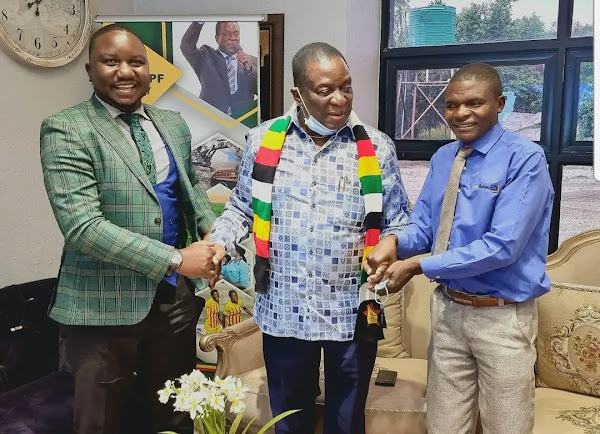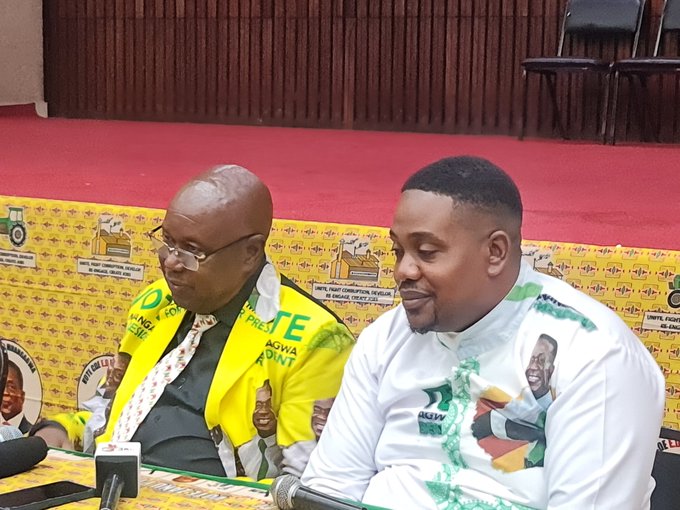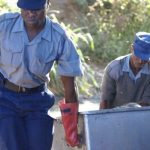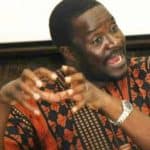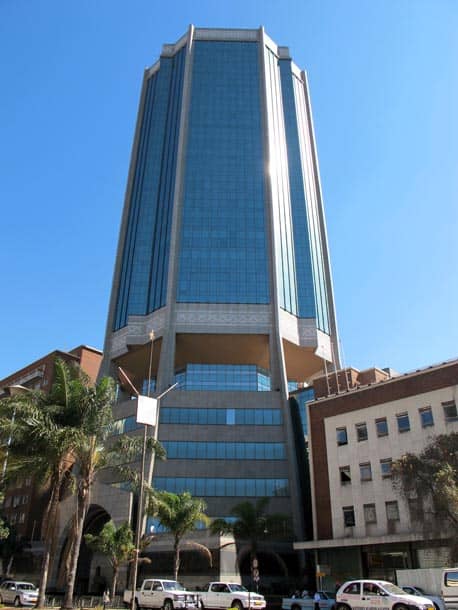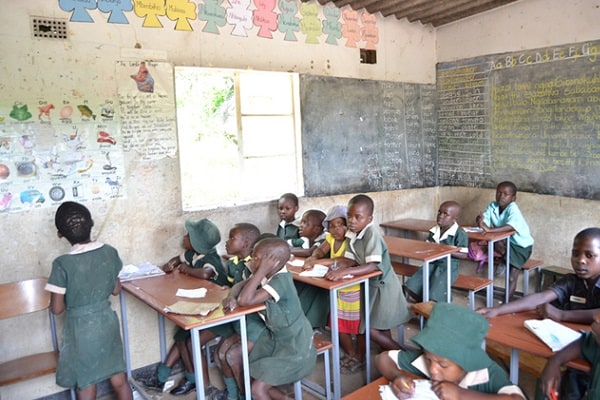By Alex Magaisa
Elections are a numbers game, it is often said. It may be a cliché, but it captures the essence of electoral contestation.
At the end of the day, the difference between success and failure is represented in the figures. In normal situations where election data is reliable, it is possible to read the general story of an election from the figures and to inform strategy.
While the reliability of election data in Zimbabwe is questionable due to the controversies surrounding electoral processes, it is not a bad starting point for an analysis of voting trends and patterns. One can consider the weaknesses of the data but still draw some useful lessons from it.
The purpose of this BSR is to begin this exercise of analyzing and interrogating election data to understand voting patterns and the strengths and weaknesses of both the ruling party and the opposition.
While elections in unfair environments are notoriously problematic, the opposition can win if parties establish effective strategies that enable them to focus on their key strengths and seek to maximize their advantages.
For example, while it is difficult to get the state broadcaster to comply with the law, parties have their means to encourage and promote a higher voter turnout which enhances the chances of success.
A higher voter turnout and enhanced vigilance on polling day are two important ways to maximize a party’s advantages.
Logical Fallacy
First, however, I must address a certain logical fallacy that has arisen in the wake of the recent by-elections. Some people have argued that the CCC was wrong to celebrate the outcome of the recent by-elections because such celebration represents an acceptance of flawed elections.
According to this logic, accepting the outcome of a flawed election undermines the CCC’s complaints regarding the Zimbabwe Electoral Commission’s failings, and other irregularities and electoral malpractices.
Purveyors of this logic go into a conspiracy-theory territory, and say the by-elections were a trap for the CCC in that the party was enticed into accepting a favourable outcome so that should things go wrong in 2023, they cannot complain that the elections were flawed.
If you accept the outcome of flawed by-elections, how can you argue against flawed general elections in 2023, so the argument goes?
This argument is a good example of a logical fallacy. On the face of it, the argument appears to make sense. If the by-elections are flawed, you are boxing yourself into accepting flawed elections in the future.
However, the flaw in the logic is that the only possible and therefore acceptable outcome of a flawed election is a defeat for the opposition party. Therefore, if the opposition wins, so the logic goes, it must mean that the elections were free and fair. It does not consider the fact that an opposition party can win a flawed election.
And that the opposition is entitled to take that victory when it comes without undermining its concerns.
While an opposition party operating in an environment that is neither free nor fair is more likely to lose and cry foul, it is also not impossible for it to succeed albeit on rare occasions.
The success of opposition parties in the Gambia in 2016 and Zambia last year present two recent examples where the opposition parties succeeded despite the odds. The electoral environments were manifestly unfair and favoured the incumbent, but they still prevailed.
Their success did not make their concerns over the electoral processes redundant. It simply meant that they were able to counter systems that were designed to thwart them.
Likewise, although the CCC won the recent by-elections, its acceptance of the outcome does not in any way sanitize the weaknesses of the electoral process. The success can be attributed to several factors, none of which mean that the electoral process was conducted in a free and fair manner.
Given the location of the by-elections, where the majority were in urban areas that are traditional strongholds of the opposition, an opposition victory was generally a foreseeable outcome. They were more likely to win than lose those by-elections even with the risk of rigging, vote-buying, and electoral malpractices.
The fact that the CCC won does not, therefore, mean that the elections were free and fair or that the elections referee is beyond reproach. Rather, it won despite the unfairness and a litany of repressive measures and electoral malpractices.
But there is no cause of action when you have won, unless of course candidates who lost choose to challenge the outcome in their constituencies citing those irregularities. Therefore, the argument that the by-elections were a form of entrapment that deprive the CCC of grounds to question unfair electoral conditions is without foundation.
It’s not a zero-sum game where taking victory means one forfeits their right to challenge the unfairness of the process in future elections.
Why Voter Turnout Matters
Now I address the key issue of why higher voter turnout can make a difference. The by-elections were characterized by a disappointingly low voter turnout. Only 35% of the eligible voters turned up on polling day which means an overwhelming majority stayed away.
One explanation is that by-elections traditionally draw fewer voters to the polls than general elections. This trend is not confined to Zimbabwe. People tend to pay more attention to general elections which include the important presidential vote than they do to by-elections.
While the low voter turnout affected most constituencies, the trend was that it was more pronounced in urban areas than their rural counterparts. No constituency illustrates this better than Mutasa South, a peri-urban constituency that has both urban, peri-urban, and rural wards.
An analysis that was done by elections watchdog ERC Africa shows that the average voter turnout in the urban wards was just 28.03% while in rural wards it was 48.63%. In peri-urban areas, it was 39.3%.
This gets interesting when one considers the performance of candidates in these respective zones. The CCC candidate won all the urban wards plus one peri-urban ward, but this is where voter turnout was the lowest.
By contrast, the ZANU PF won all the rural wards plus 2 peri-urban wards, where the voter turnout was the highest. Clearly, the ZANU PF candidate benefited from the higher voter turnout in his strongest rural zones while the CCC candidate suffered from the low voter turnout in his stringer urban zones.
Voter turnout is even more significant where the margin of victory/defeat is small. In this case, the ZANU PF candidate won by just 549 votes. Yet consider the fact that there are more registered voters in the urban wards (18715) than there are in the rural wards (14472).
If voter turnout in the urban wards where the CCC candidate performed more strongly had just been slightly higher, this might have made a difference. The following comparison illustrates the point:
Take Ward 12, an urban ward that has 7861 registered voters. Only 2144 voters turned up on polling day representing just 27.27% voter turnout. An overwhelming majority (65%) of these voters voted for the CCC candidate.
The ZANU PF candidate got 32.1% of the vote. Perhaps a higher voter turnout could have yielded more voters for the candidate and made a difference.
Now compare with Ward 25, a rural ward that has just 1622 registered voters. 846 turned up to vote to represent 52,16% voter turnout.
At 85%, ZANU PF took an overwhelming majority of the voters that turned up. The CCC candidate got just 9.6% of the vote.
The difference in the margins of victory/defeat also varies according to the location of the ward. Where the ZANU PF candidate won in rural wards, the margin of victory was significantly bigger compared to where the CCC candidate won in the urban wards. In Ward 12 where the CCC candidate won 65% of the vote, the ZANU PF candidate had 32,1%.
By contrast, in Ward 25 where the ZANU PF candidate had 85% of the vote, the CCC candidate only got 9.6%.
Now, it is true that Mutare South is only one of 28 constituencies that were contested in the recent by-elections, and it is also true that there are multiple variables beyond the factor of voter turnout.
But given its hybrid character as a peri-urban constituency, it provides interesting insights into the electoral dynamics and how parties should strategize.
A fact that opposition parties must learn to adapt around is that there will always be irregularities in elections held in an authoritarian environment. Vote-buying and abuse of the assisted voting facility are serious handicaps that will not go away overnight, especially when dealing with an elections referee that is willing to turn a blind eye to the ruling party’s shenanigans.
In short, there are things that the opposition cannot control, but there are also certain things that are within its control. One of them is voter turnout.
If people are registered to vote, they are eligible to vote, and their vote can affect the outcome of an election. The problem is that too few people are turning up to vote and as we have already seen in the hybrid constituency of Mutasa South, it impacts the opposition more as too few people in opposition strongholds are turning up to vote compared to their rural counterparts which traditionally tilt towards the ruling party.
Strategizing for elections: It’s all in the numbers
As I indicated, I’m currently doing a study of election results and voting patterns across the country. My interest is to identify voting trends in the different provinces and to investigate factors that account for those voting patterns. I do so with the qualification that voting figures are mired in controversy.
Nevertheless, they are the data set that we have and their weaknesses notwithstanding, they provide a useful starting point for analysis.
Mashonaland West
I’m starting with Mashonaland West province based on the 2018 election results. I look at how the presidential candidates performed but for a broader view of voting behaviour, I also compare this to the performance of parliamentary candidates.
It will be clear that while there are similar trends, there are also points of divergence which present useful teaching moments.
In 2018, the presidential election was effectively a two-horse race between Emmerson Mnangagwa and Nelson Chamisa. The other 20 odd candidates made no significant impact at all to warrant serious consideration.
There are 22 constituencies in Mashonaland West. With a mixture of urban and rural constituencies, one of the three Mashonaland provinces presents a representative picture of the trends between rural and urban voting patterns that are a conspicuous feature of Zimbabwean elections.
Differences in the presidential and parliamentary races
Mnangagwa won in 13 constituencies while Chamisa took the remaining 9. Of the 9 constituencies that Chamisa won, 5 were urban and 4 were rural. Of the 13 constituencies that Mnangagwa won, 12 were rural while only 1 was urban.
Therefore, Chamisa won most of the urban constituencies while Mnangagwa dominated the rural constituencies. This is consistent with the national trend where the opposition tends to win in urban areas while ZANU PF does well in rural areas.
Interestingly, at the parliamentary level, ZANU PF won 17 constituencies (4 more than Mnangagwa won) while the MDC Alliance got 4 constituencies (5 less than Chamisa won) with the remainder going to an independent, Temba Mliswa.
This could mean several things one of which is that there are voters who preferred Chamisa for the presidency but did not fancy his party or its parliamentary candidates. Another is that there are people who preferred ZANU PF or its parliamentary candidates ahead of its presidential candidate, Mnangagwa.
A good starting point would be to identify constituencies where Mnangagwa performed weaker than his candidates.
A closer look at Norton constituency
Norton constituency which has both rural and urban wards is an interesting case. Mliswa, whose political totem is ZANU PF despite his status as an independent, polled 16857 votes beating the MDC Alliance candidate who had 7850 votes and ZANU PF candidate Chris Mutsvangwa who took 4255 votes.
You may recall that Chamisa had 20194 votes in the presidential race ahead of Mnangagwa who had 9436 votes. It appears that the people who voted for the MDC Alliance candidate and most of those who voted for Mliswa chose Chamisa for the presidency.
However, if you add Mliswa’s votes, and the MDC Alliance candidate’s votes the total is 24437. That is 4243 votes more than Chamisa’s total votes. This means there is a chunk of voters who did not vote for the ZANU PF parliamentary candidate, Chris Mutsvangwa but opted for Mnangagwa for the presidency.
Indeed, Mutsvangwa’s 4255 votes were 5181 votes fewer than Mnangagwa’s votes in the presidential race. Looking at these numbers, Norton is a safe seat for Chamisa, but there is room to maximize its potential. Those voters who abandoned Mutsvangwa but voted for Mnangagwa should be the target.
Differences in the margin of victory
A major feature of the presidential race is the big difference in the margin of victory for the respective candidates and this also demonstrates the rural/urban divide. Where Chamisa won, the margin of victory was relatively smaller than where Mnangagwa was declared the winner.
The Chegutu constituencies illustrate this point well: in Chegutu West, where Chamisa won the difference was 3445 votes while in the neighbouring Chegutu East, where Mnangagwa won, the difference was 8800. The margin is even smaller at the parliamentary level in Chegutu West where Dexter Nduna lost by just 16 votes although ZEC unjustly handed this seat to him in a bizarre case of electoral fraud.
However, Chamisa’s margins in some urban constituencies were quite large. For example, in Norton, he had a majority of 10,758 votes and in Chinhoyi he was ahead by 10,652. In Kadoma Central Chamisa’s majority was 9209 votes.
But as we shall soon observe, their margins pale by comparison with Mnangagwa’s victories in rural constituencies. These margins in urban areas could be enhanced with a higher voter turnout.
Rural avalanche
The tide turns significantly when the rural constituencies where Mnangagwa won are considered. For example, in Chakari, Mnangagwa won by a majority of 20368 votes and had a 20461 majority in Mhangura. In Makonde, Mnangagwa took 18868 votes ahead of Chamisa with 4808 votes.
The pattern was similar in the parliamentary race where the ZANU PF candidate had a 20826 majority in Chakari. But in Mhangura, the ZANU PF parliamentary candidate had a wider margin of 22,606 over the MDC Alliance candidate. In fact, the ZANU PF candidate was more popular than Mnangagwa by 1148 votes.
This might be the difference between Chamisa’s votes (4463) and the MDC parliamentary candidate’s votes (3466).
Hurungwe East was another big majority for Mnangagwa where he got 21313 votes against Chamisa’s 5090, a majority of 16223. Mnangagwa also won the other 3 Hurungwe constituencies with an average majority of 4449 votes.
It is important to note that of the 4 Hurungwe constituencies, Chamisa was closest in Hurungwe West where he had 8330 votes against Mnangagwa’s 10266. Makonde was another Mnangagwa stronghold giving him a majority of 14060. Muzvezve gave Mnangagwa a majority of 11306 and Sanyati delivered a smaller majority of 5828.
What these figures reveal is that the opposition has a lot of work to do in these constituencies even if the pursuit is of a more modest ambition of closing the gap. You don’t get to win every constituency.
Even in older democracies, political parties know which are their opponents’ strongholds – you don’t give up but you try your best to minimize the gap while focusing on your strengths.
This is especially important in an electoral system where every vote counts at the presidential level.
The strategic role of electoral pacts
By contrast, in the rural constituencies that Chamisa won, the margins were quite small. For example, Chamisa won the Magunje constituency but with a majority of just 496 votes.
The tightness of this constituency is evident when one considers that despite Chamisa winning, his party lost the seat to ZANU PF in the parliamentary race. The MDC Alliance candidate got 5694 votes while the ZANU PF candidate polled 6726 votes. Interestingly, an independent candidate, Godfrey Gandawa was a close third with 5598 votes.
It helps to note that Gandawa was an ex-ZANU PF MP for the area and pledged his support for Chamisa. His supporters voting for Chamisa may explain why Chamisa pipped Mnangagwa in that constituency albeit by a small margin.
The Magunje scenario is a reminder of the role of carefully designed electoral pacts in national elections where realpolitik sometimes must hold sway.
This is because at times there must be a realization that because of the local nature of politics, some locals may genuinely prefer their local candidate for parliament or council and will happily trade their votes to a presidential candidate if he or she is willing to support their preferred candidate.
In this case, realpolitik would have dictated that the MDC Alliance could have traded the Magunje seat to Gandawa in return for his supporters’ votes in the presidential race.
But with the way events unfolded, the seat was lost to ZANU PF and the constituency ended up being represented by the minority because the opposition votes (11292) were split between Gandawa (5598) and the MDC Alliance candidate (5694) and probably more of Gandawa’s supporters who could have augmented Chamisa’s vote stayed away.
We have only looked at this one case as we consider the electoral strategy of electoral pacts but keep an eye on it as we analyze results in other provinces over the next few weeks.
Swing Constituencies
The two Mhondoro constituencies present a fascinating picture that makes them swing constituencies. Chamisa won the Mhondoro-Mubaira constituency with 9465 votes to Mnangagwa’s 8794 a majority of just 671 votes.
On the other hand, Mnangagwa won Mhondoro-Ngezi but also with a small majority of 1068 votes. These figures suggest that the two closely contested constituencies can go either way. Results from the parliamentary race provide a perfect illustration.
ZANU PF won Mhondoro-Mubaira with 9418 votes with the MDC Alliance candidate polling 5514 votes.
So how come Chamisa won the presidential race in that constituency when his candidate performed so badly? Mnangagwa’s (8794) and his parliamentary candidate’s votes (9418) are not significantly different. The answer seems to lie in the 3151 voters who opted for an independent candidate, Sylvester Nguni in the parliamentary race. Readers may recall that Nguni is an ex-ZANU PF MP and Minister who was sacked a few years ago.
If these supporters had chosen Mnangagwa, he would have won with a wide margin. But clearly, they chose someone else, most likely Chamisa. Chamisa may have picked up a few other voters to give him a thin margin of victory in the presidential race. Here again, we see another signal of why electoral pacts can make a difference in the presidential race.
Mhondoro-Ngezi was also won by ZANU PF, but the parliamentary candidate with 12708 performed better than Mnangagwa who had 11475 votes.
Of greater interest though is that the MDC Alliance parliamentary candidate also performed poorly compared to Chamisa in the presidential race.
The candidate got 6563 votes compared to Chamisa’s 10407 votes. One possible explanation is that in addition to those who voted for the minor candidates in that constituency, some of the ZANU PF parliamentary candidate’s supporters chose Chamisa ahead of Mnangagwa.
One thing for sure is that the Mhondoro constituencies are battleground seats that can swing an election one way or the other. Such constituencies require different strategies compared to strongholds or safe seats.
Political economy
Finally, the 4 Zvimba constituencies present an interesting point in the study of electoral dynamics. Chamisa and Mnangagwa shared the spoils, taking two each.
Chamisa won Zvimba East with 16,179 to Mnangagwa’s 15,465, a small majority of 714 votes. He also won Zvimba West with 8474 against Mnangagwa’s 8205, a tiny majority of 269 votes.
By contrast, Mnangagwa won Zvimba South taking 13298 votes against Chamisa’s 7706 votes, a majority of 5592. But by far the large majority came in Zvimba North where Mnangagwa got 20263 to Chamisa’s 3747, a difference of 16516 votes.
It should be interesting to investigate the factors that result in such a mixed set of results in the same area. One factor, it appears, is that Zvimba has a mixture of rural and pockets of urbanized areas.
This means some constituencies are essentially peri-urban and this may account for Chamisa’s better performance. Others indicate that the presence of military cantonments in some of the Zvimba constituencies may also impact the results. Some speculate that some locals may not have forgiven Mnangagwa for Robert Mugabe’s ouster and Zvimba was Mugabe’s rural home.
Mugabe himself declared before the 2018 elections that he would vote for Chamisa.
As we shall see in analyzing the voting trends in other provinces, the local political economy plays a critical factor in voting choices.
Where there are large resettlement areas with beneficiaries of the fast-track land reform program whose status on the land is perennially insecure, the ruling party has huge leverage over voters.
Likewise, where there are large numbers of people whose personal economies depend on artisanal mining (makorokoza), which is permitted at the government’s benevolence, voters tend to believe that they are at the mercy of the ruling party.
Wit is because of this that where residents are in illegal settlements, the ruling party can lure them with promises of giving them a secure title. Understanding this local political economy is important for the opposition parties in devising their policies and election strategies.
Conclusion
This BSR has only considered one province, but already you can see the complex and multiple issues arising from a simple examination of the figures.
Whatever the right explanations might be, the bottom line is that opposition strategists would do well to study all the results to come up with the right campaign strategies.
There are areas where the opposition is strong and others where it is weak, and this should not be obfuscated by constantly raising the rigging card whenever questions are asked.
It’s easy and convenient to raise rigging, and while it is undoubtedly a big problem in our electoral system, all too often it can breed laziness and shift responsibility.
An alternative approach is to conduct a rigorous analysis of election data, taking not account its weaknesses. Such an approach will yield a bigger and better picture of where parties are strong and where they are weak. It will inform the campaign and mobilization strategies as well as resource allocation.
It will inform whether you need pacts and if so how they can be designed.
The recent by-elections gave a shining example in Binga North of how to beat the rigging and vote-buying machinery.
Prince Dubeko Sibanda rightly emerged as one of the stars of the by-election because he did not allow the impediments placed in his way to break him.
Many will recall that Binga is one of the areas where the CCC was refused to hold a star rally. This means the excitement and camaraderie that comes with rallies was absent in Binga North.
ZANU PF invested heavily in that seat hoping to grab it from the opposition. They deployed all their bigwigs to the constituency, from Mnangagwa himself and his deputies.
There were major efforts toward vote-buying. They brought bicycles, maize, money, and other trinkets. However, as Dubeko Sibanda explained, his campaign was well-grounded in the communities.
The structures built around every polling station worked. Despite its heavy investment, ZANU PF failed to build any significant gains in the constituency.
Binga North is a good example that when fighting an election in an authoritarian environment, you must prepare for the worst and devise strategies to overcome the impediments.
It’s not enough to cry foul and point to the litany of irregularities. They are known to exist in authoritarian environments and there is no credit to be gained from articulating them.
People want to know what you will do to counter the impediments. Binga North reminds us that you must do what is within your control, and that is to spread your message, to get people to vote, and finally to watch and guard the vote.
The CCC will go into the 2023 election knowing that the odds are heavily against it. It must approach 2023 just like the people of Binga North did. Their will prevailed, despite the best efforts of the regime to thwart it.
WaMagaisa



